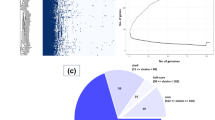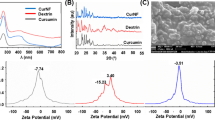Abstract
The long-term administration of acyclovir (ACV) for therapy against herpes simplex virus type 1 (HSV-1) infections can result in the emergence of ACV-resistant HSV strains. It is therefore urgent to develop new anti-herpetic compounds with mechanisms that differ from that of ACV. Cyanovirin-N (CV-N) is an antiviral agent that has an inhibitory effect on HSV-1 infections, and PEGylation of CV-N is potentially useful for pharmaceutical applications. Here, a (Gly4Ser)3 linker molecule was attached to the N-terminus of CV-N, and the resulting compound, linker-CV-N (LCV-N), was produced on a pilot scale with purity up to 95%. Then, PEG10k-LCV-N was synthesized by modifying at the α-amine group of the N-terminus of LCV-N with 10-kDa polyethylene glycol propionaldehyde (mPEG-ALD). CV-N, LCV-N and PEG10k-LCV-N were all found to have potent inhibitory activity against ACV-resistant HSV strains with IC50 values in the nM range. LCV-N was the most potent of these three compounds against both normal and ACV-resistant HSV strains. Although PEG10k-LCV-N showed less antiviral activity than CV-N and LCV-N, it still exhibited significant and universal virucidal activity against drug-resistant viruses. The toxicity and immunogenicity of PEG10k-LCV-N were dramatically lower than those of CV-N and LCV-N. In conclusion, we suggest that LCV-N and PEG10k-LCV-N are promising and safe microbicides for the control and/or treatment of ACV-resistant HSV infection.




Similar content being viewed by others
References
Singh RS, Walia AK, Khattar JS, Singh DP, Kennedy JF (2017) Cyanobacterial lectins characteristics and their role as antiviral agents. Int J Biol Macromol 102:475–496
Yu H, Liu ZT, Lv R, Zhang WQ (2010) Antiviral activity of recombinant cyanovirin-N against HSV-1. Virologica Sinica 25:432–439
Smee DF, Bailey KW, Wong MH, O’Keefe BR, Gustafson KR, Mishin VP, Gubareva LV (2008) Treatment of influenza A (H1N1) virus infections in mice and ferrets with cyanovirin-N. Antivir Res 80:266–271
Boyd MR, Gustafson KR, McMahon JB, Shoemaker RH, O’Keefe BR, Mori T, Gulakowski RJ, Wu L, Rivera MI, Laurencot CM, Currens MJ, Cardellina JH II, Buckheit RW Jr, Nara PL, Pannell LK, Sowder RC 2nd, Henderson LE (1997) Discovery of cyanovirin-N, a novel human immunodeficiency virus-inactivating protein that binds viral surface envelope glycoprotein gp120: potential applications to microbicide development. Antimicrob Agents Chemother 41:1521–1530
Xiong S, Fan J, Kitazato K (2010) The antiviral protein cyanovirin-N: the current state of its production and applications. Appl Microbiol Biotechnol 86:805–812
Barrientos LG, Matei E, Lasala F, Delgado R, Gronenborn AM (2006) Dissecting carbohydrate-Cyanovirin-N binding by structure-guided mutagenesis: functional implications for viral entry inhibition. Protein Eng Des Sel 19:525–535
Harris JM, Chess RB (2003) Effect of pegylation on pharmaceuticals. Nat Rev Drug Discov 2:214–221
Turecek PL, Bossard MJ, Schoetens F, Ivens IA (2016) PEGylation of biopharmaceuticals: a review of chemistry and nonclinical safety information of approved drugs. J Pharm Sci 105:460–475
Zappe H, Snell ME, Bossard MJ (2008) PEGylation of cyanovirin-N, an entry inhibitor of HIV. Adv Drug Deliv Rev 60:79–87
Pasut G, Veronese FM (2012) State of the art in PEGylation: the great versatility achieved after forty years of research. J Control Release 161:461–472
Gao X, Chen W, Guo C, Qian C, Liu G, Ge F, Huang Y, Kitazato K, Wang Y, Xiong S (2010) Soluble cytoplasmic expression, rapid purification, and characterization of cyanovirin-N as a His-SUMO fusion. Appl Microbiol Biotechnol 85:1051–1060
Chen X, Zaro JL, Shen WC (2013) Fusion protein linkers: property, design and functionality. Adv Drug Deliv Rev 65:1357–1369
Wu C, Chen W, Chen J, Han B, Peng Z, Ge F, Wei B, Liu M, Zhang M, Qian C, Hou Z, Liu G, Guo C, Wang Y, Kitazato K, Yu G, Zou C, Xiong S (2015) Preparation of monoPEGylated Cyanovirin-N’s derivative and its anti-influenza A virus bioactivity in vitro and in vivo. J Biochem 157:539–548
Chen J, Huang D, Chen W, Guo C, Wei B, Wu C, Peng Z, Fan J, Hou Z, Fang Y, Wang Y, Kitazato K, Yu G, Zou C, Qian C, Xiong S (2014) Linker-extended native cyanovirin-N facilitates PEGylation and potently inhibits HIV-1 by targeting the glycan ligand. PloS One 9:e86455
Andrei G, Snoeck R (2013) Herpes simplex virus drug-resistance: new mutations and insights. Curr Opin Infect Dis 26:551–560
Tiwari V, Shukla SY, Shukla D (2009) A sugar binding protein cyanovirin-N blocks herpes simplex virus type-1 entry and cell fusion. Antivir Res 84:67–75
Lee H, Jang IH, Ryu SH, Park TG (2003) N-terminal site-specific mono-PEGylation of epidermal growth factor. Pharm Res 20:818–825
Kukhetpitakwong R, Hahnvajanawong C, Homchampa P, Leelavatcharamas V, Satra J, Khunkitti W (2006) Immunological adjuvant activities of saponin extracts from the pods of Acacia concinna. Int Immunopharmacol 6:1729–1735
Barrientos LG, Louis JM, Botos I, Mori T, Han Z, O’Keefe BR, Boyd MR, Wlodawer A, Gronenborn AM (2002) The domain-swapped dimer of cyanovirin-N is in a metastable folded state: reconciliation of X-ray and NMR structures. Structure 10:673–686
Garland SM, Steben M (2014) Genital herpes. Best Pract Res Clin Obstet Gynaecol 28:1098–1110
Piret J, Boivin G (2011) Resistance of herpes simplex viruses to nucleoside analogues: mechanisms, prevalence, and management. Antimicrob Agents Chemother 55:459–472
Acknowledgements
We thank Dr. Jun Fan of the Institute for Virus Research, Kyoto University, for her help on the manuscript discussion. This work was supported by the Guangdong Provincial Science & Tech Project (2015A020211016) and the Guangzhou Industry-Academia-Research Collaborative Innovation Project (201604016009) to S.X.
Author information
Authors and Affiliations
Corresponding author
Ethics declarations
Conflict of interest
All authors declare no conflict of interest.
Informed consent
This article does not contain any studies with human participants.
Additional information
Handling Editor: Scott Schmid.
Rights and permissions
About this article
Cite this article
Lei, Y., Chen, W., Liang, H. et al. Preparation of a monoPEGylated derivative of cyanovirin-N and its virucidal effect on acyclovir-resistant strains of herpes simplex virus type 1. Arch Virol 164, 1259–1269 (2019). https://doi.org/10.1007/s00705-018-04118-4
Received:
Accepted:
Published:
Issue Date:
DOI: https://doi.org/10.1007/s00705-018-04118-4




